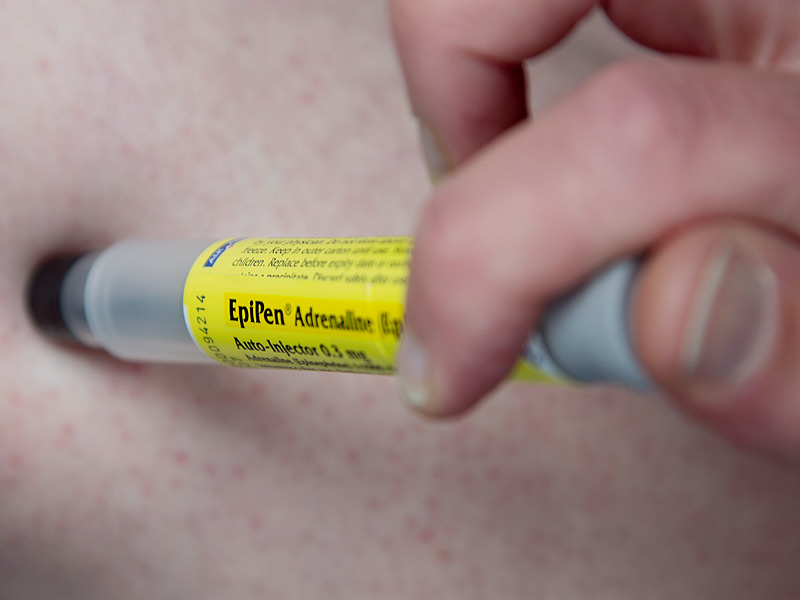
Pharma’s business model: Your money or your life
Human life is supposed to be priceless, but U.S. pharmaceutical companies, like the makers of the EpiPen (Mylan), have a clear sense of how much a life is worth to people who desperately need a medication for their own survival or that of their children: whatever Mylan wants to charge them.
Mylan is hardly the only pharmaceutical company that routinely practices price gouging at the expense of gambling with people’s lives, playing with parents’ peace of mind, and breaking or severely straining family budgets. It’s virtually standard procedure for Pharma, as the pharmaceutical industry as a whole is called. Pharma is one of the most nefarious components of the mercenary medicine complex that essentially controls health care in the United States.
Last year, Martin Shkrely, founder of Turing Pharmaceuticals, raised the price of the anti-parasitic drug Daraprim from $13.50 to $750 from one day to the next. The eye-popping increase was enough to arouse even Congress, which under Republican control is cozily in bed with Pharma.
But the case of the soaring cost of the EpiPen is, for several reasons, even more egregious. The patient pool that requires Daraprim is limited; parasitic infections are not very common in this country. In contrast, 3.6 million people have prescriptions for the EpiPen. Many of them are children, which makes the fact that Mylan has quintupled the price since 2004, making it unaffordable for many families, not just outrageous but outright unconscionable.
Add the fact that the EpiPen is used in emergency, life-threatening situations when a person is undergoing anaphylactic shock, for instance as a result of a food allergy, an insect sting, or a severe reaction to a drug such as penicillin. In a situation like this, the drug maker, especially as in this case when it has a monopoly in the market, has all the bargaining power and the consumer has none.
Moreover, the EpiPen does not represent any kind of fundamental medical or scientific breakthrough. The ingredient that goes into the EpiPen, currently sold at $300 a pop, has been known for decades. It is epinephrine, also known as adrenaline. The real cost of the epinephrine in the EpiPen is reportedly about $1.
The other $299? It goes mainly to profit, pervasive advertising and public relations, aggressive lobbying, and the small cost of the device itself, the auto-injector which actually delivers the dose of epinephrine.
Mylan evidently identified the EpiPen as a “profit center”—a cash cow—more than a decade ago and began to make sizable price increases, regularly but over a period of time, possibly to minimize the kind public opprobrium and political pressure visited on Turing. Still, the staged price increases brought the profit margin on the EpiPen from a healthy 9 percent in 2008 to a whopping 55 percent today.
The strategy of boiling the frog by making the water just a few degrees at a time worked until recently when something like the equivalent of the frog finally dying apparently happened. Only in this case, the “experimental subjects” were human, and at least one child died because her Virginia elementary school did not have any EpiPens. The dirty stuff began to hit the fan in the media and among some politicians.
Because EpiPens are used in life or death situations where any delay can be fatal, Mylan’s pricing policies make especially clear what the implicit Pharma business model really is. The pharmaceutical models use that business model with countless life-saving drugs.
Pharma’s business model is essentially not much different than the armed robber’s business model: your money or your life. Only armed robbers don’t have a powerful lobby in Washington and the best Congress that money can buy.
But let’s not pick just on poor Mylan. The web site Alternet has published a kind of rogue’s gallery of the worst Pharma price gougers. It includes:
- Gilead Sciences, which in 2014 introduced the hepatitis C drug Sovaldi. The cost is $84,000 for a 12-week course of treatment.
- Kalydeco is a drug that treats a rare form of cystic fibrosis in patients ages 6 years and older and which costs $300,000 a year.
- Kadcyla is a breast cancer drug that costs $94,000 a year.
- Zydelig, a leukemia drug, also made by Gilead, the Hep C drug price gouger, is priced at $57,755 a year.
- Hetlioz, a drug that treats non-24 sleep disorder—a problem affecting blind people whose circadian rhythm is off—costs $60,000 a year.
- Xyrem, a drug that treats narcolepsy, goes for $35,000 a year.
- Abilify, a psychiatric drug usually added on to another expensive psychiatric drug, costs $17, 316 year.
- Praluent, a biologic to lower cholesterol, is expected to cost over $14,600 a year.
- Acthar, a drug that treats treat seizures in infants under 2-years-old, is priced at a $300,000 a year.
All of this is shocking, deeply disturbing, but not surprising. It is also unlikely to change short of a revolution more radical than Bernie Sanders ever proposed. What Pope John Paul II called “savage capitalism” and Pope Francis has repeatedly denounced has become the norm in the twenty-first century.
Among the developed nations, the most savage form of capitalism is practiced in the United States. And, in the United States, the human toll of this savagery cuts deepest in the area of health care, where mercenary medicine reigns and Big Pharma extracts its pound of flesh.
[Related article that appeared in The Washington Post: U.S. lawmakers demand investigation of $100 price hike of lifesaving EpiPens.]


